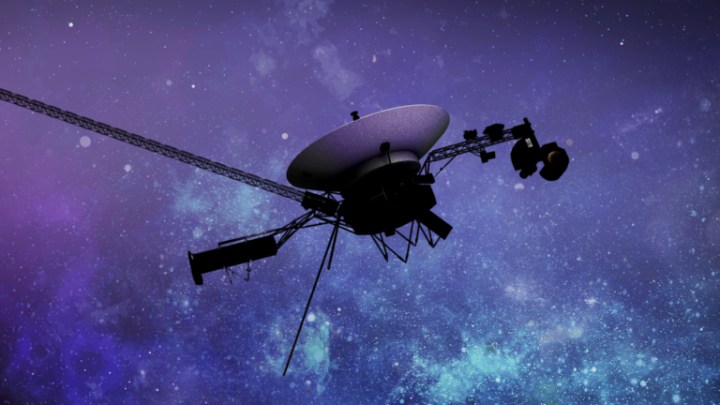The Voyager 1 spacecraft is experiencing a communication issue, meaning it is currently unable to send science data back to Earth. Launched in 1977, the pair of Voyager probes are the most distant man-made objects in the universe, having traveled beyond the orbit of the planets and into interstellar space, the region between stars.
NASA announced the issue this week, confirming that the spacecraft was still able to send and receive commands but not science data. “Engineers are working to resolve an issue with one of Voyager 1’s three onboard computers, called the flight data system (FDS),” NASA wrote in an update. “The spacecraft is receiving and executing commands sent from Earth; however, the FDS is not communicating properly with one of the probe’s subsystems, called the telemetry modulation unit (TMU). As a result, no science or engineering data is being sent back to Earth.”

The Flight Data System or FDS collects information from both the spacecraft’s systems and its science instruments, bundling this information up so it can be sent to Earth in binary by the telemetry modulation unit or TMU. Engineers on the ground noticed that the TMU was sending a repeating binary pattern, indicating that it was experiencing some kind of error and was not transmitting real data, and they traced the source of the problem to the FDS.
NASA warns that it could take some time to come up with a fix for this issue, given that the spacecraft hardware is decades old. Another problem is that because the spacecraft is so far away, it takes considerable time to send and receive messages from Earth — currently, it takes 22.5 hours each way to send a message because of the speed of light.
Voyager 1 has bounced back from many previous issues, however. In May last year, the spacecraft had a problem with its altitude control system, which was eventually fixed in September, and earlier this year, NASA temporarily lost contact with the other probe, Voyager 2. The spacecraft are not only nearly 50 years old, but they are also in a high-radiation environment that can be damaging to electronics over the long term. The spacecraft were originally built for a mission of just five years to study Jupiter and Saturn, but given their longevity, they have helped scientists study far beyond that, such as learning about interstellar space.



